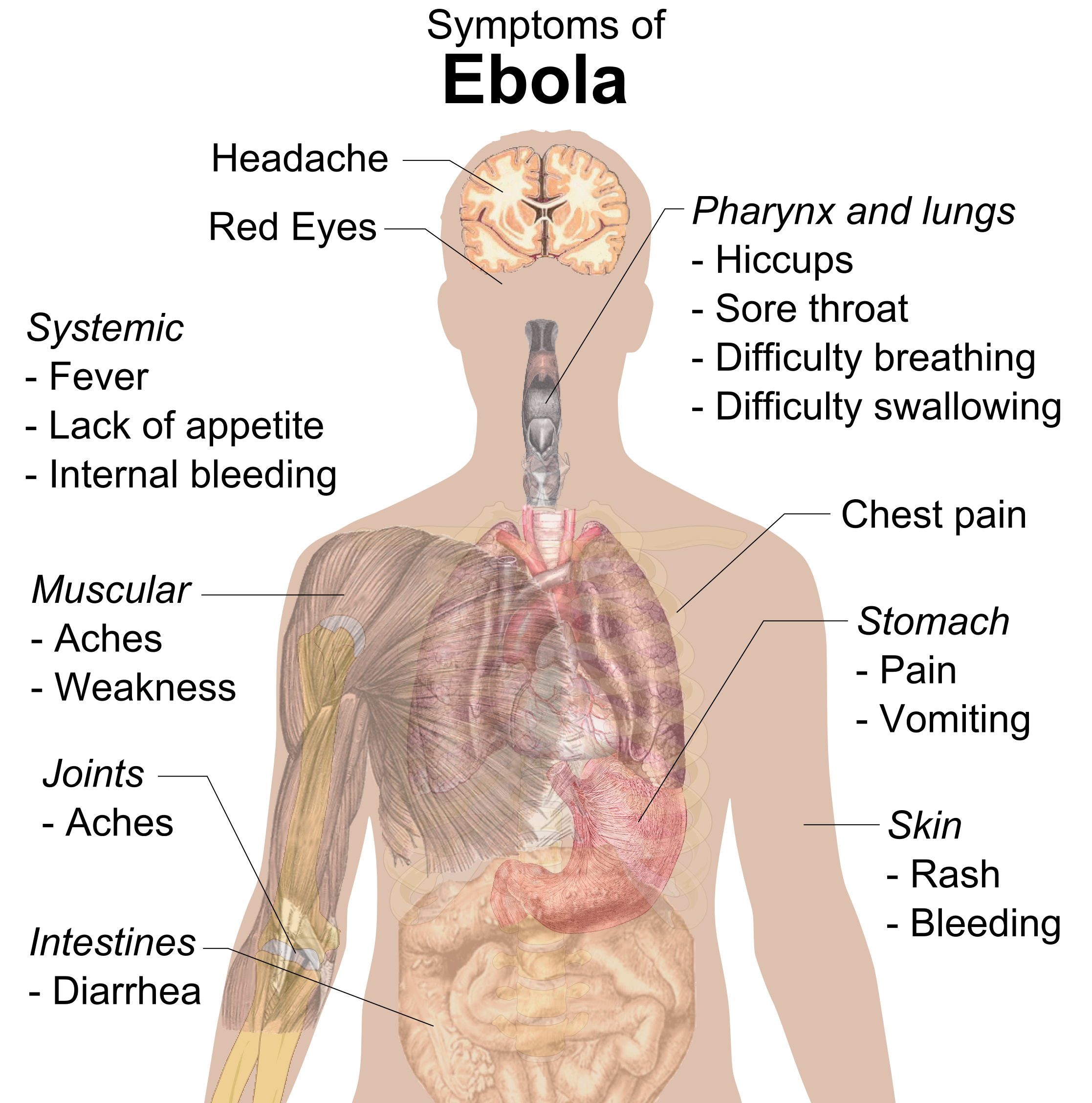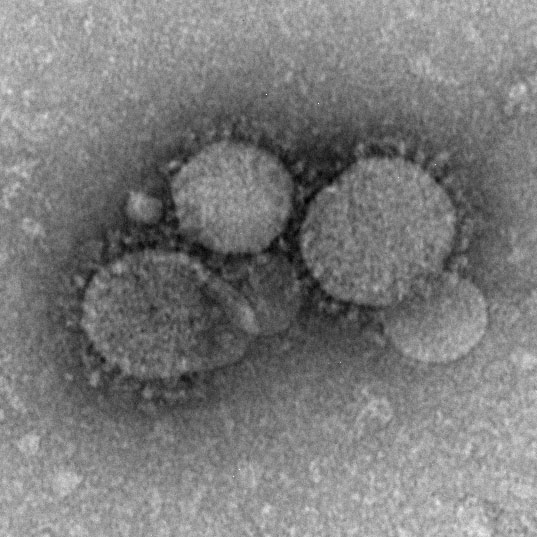| Bersiap untuk darurat, stok makanan yang mudah dipersiapkan dan tahan lama |
15 Perlengkapan yang Harus Dimiliki pada Saat Keadaan Darurat Bencana
Cara Mencegah Ebola
Beberapa hari ini kita melihat berita tentang menyebarnya wabah ebola di Afrika Bagian Barat. Ebola Hemorrhagic Fever (Ebola HF) adalah penyakit mematikan pada manusia dan primata. Asalnya masih belum diketahui, namun sebagian besar peniliti percaya bahwa penyakit ini bersifat zoonosis atau yang berasal dari hewan.
Dinamakan Ebola merujuk dari nama sungai di Negara Kongo, tempat penyakit ini pertama muncul pada tahun 70an.
Walaupun Indonesia belum terjangkit dengan penyakit ini, namun untuk diketahui berikut ini adalah tips untuk menghindari infeksi, melindungi diri dan langkah apa yang harus diambil saat terinfeksi.
1. Pahami bagaimana penyakit Ebola menyebar.
Ebola menyebar dalam berbagai cara, utamanya melalui kontak langsung dengan penderita, khususnya darah dan sekresi pasien yang terinfeksi. Namun itu, kontak dengan benda-benda seperti pakaian, selimut, dan jarum juga dikaitkan dengan penyebaran penyakit ini.
2. Hindari bepergian ke daerah yang diduga atau dilaporkan.
Ebola berada di negara-negara Afrika Tengah dan Barat, dan menyebar disekitar fasilitas kesehatan dimana pasien tersebut dirawat. Tetap terinformasi mengenai daerah-daerah mana yang berbahaya. Info lengkap mengenai wilayah-wilayah mana yang diduga dan dikonfirmasi berbahaya dapat dicek melalui situs WHO berikut http://www.who.int/csr/disease/ebola/en/
3. Hindari kontak langsung dengan orang yang terinfeksi.
Karena penyakit ini menyebar terutama melalui kontak langsung dengan pasien yang terinfeksi, maka cara terbaik untuk menghindari infeksi adalah menghindari orang yang sudah sakit. Darah dan cairan tubuh lainnya dari pasien yang terinfeksi sangat erat kaitannya dengan penyebaran penyakut.
4. Hindari makan daging dari binatang liar/buruan.
Peneliti memiliki kecurigaan bahwa penyakit datang melalui hewan liar, dan hewan liar tersebut mengkonsumsi daging primata.
5. Ketahui gejala-gejala Ebola.
- Demam
- Sakit kepala
- Nyeri sendi dan otot
- Badan lemah
- Diare
- Muntah
- Nyeri perut
- Kurang nafsu makan
- Ruam
- Mata kemerahan
- Cegukan
- Batuk
- Sakit tenggorokan
- Nyeri dada
- Kesulitan bernapas atau menelan
- Pendarahan dalam dan diluar tubuh
6. Cuci tangan secara teratur dan bersih dengan sabun anti bakteri, istirahat yang baik, serta perilaku hidup bersih dan sehat.
7. Melaporkan kepada petugas kesehatan bila mengalami gejala-gejala terkait.
Semoga tips ini dapat sedikit memberikan pengetahuan bagi teman-teman mengenai penyakit Ebola. Adapun kunci utama pengendalian penyakit Ebola adalah efektifitas penanganan pada sumbernya serta melokalisasi penyakit agar tidak meluas.Semoga pula, Kementerian Kesehatan dapat meningkatkan kapasitasnya dengan baik dan mensosialisasikan tentang penyakit ini kepada masyarakat luas agar (amit-amit bila terjadi) kita siap menghadapinya.
Demikian, bila ada tambahan dan masukan, sangat kami hargai :)
Sumber: Wikihow
Video: Kira-kira Seperti Ini Pandemi Bila Terjadi
"We live in a complex world. The more advanced it gets, the more vulnerable it becomes. We've created a house of cards. Remove just one, and everything falls apart.
On Black Friday, a devastating pandemic sweeps through New York City, and one by one, basic services fail. In only days, without food or water, society collapses into chaos. The Division, an autonomous unit of tactical agents, is activated. Leading seemingly ordinary lives among us, these agents are trained to operate independently in order to save society.
When society falls, your mission begins."Video diatas memang hanya animasi. Namun gambaran yang diberikan game terbaru Tom Clancy's: The Division ini cukup memberi rasa takut bagi yang melihatnya. Pandemic apocalypse atau kiamat pandemi saya anggap sesuatu yang baru untuk menjadi plot dalam video games. Kita biasa menemukan games dengan latar belakang kiamat zombie, kiamat alien, atau kiamat makhluk gaib.
Beberapa hal yang menarik untuk diketahui dari video tersebut yaitu bagaimana pelayanan umum lumpuh, masyarakat mengunci diri dengan mengumpulkan stok makanan dan minumannya, tidak ada penegakkan hukum, kehilangan orang-orang terdekat, dan runtuhnya norma-norma sosial.
Yang pasti hal pandemi belum terjadi, dan gambaran tersebut hanyalah suatu pengantar bagi para pemilik perangkat games untuk membeli games tersebut. Namun kita seperti diingatkan dan diperlihatkan agar selalu mewaspadai terhadap penyakit-penyakit menular yang berpotensi mewabah dan pandemi.
Semoga pemerintah kita ada yang hobi main games :)
Sekilas Tentang Penyakit MERS
Penyakit MERS atau Middle East Respiratory Syndrome Corona Virus (MERS‐CoV) ada sejak tahun 2012. Dari data yang kami dapatkan sudah ada 254 kasus terkonfirmasi dengan 93 kematian. Dari keseluruhan kasus, yang terbanyak berasal dari negara-negara Timur Tengah seperti Saudi Arabia, Yordania, Kuwait, Oman, Qatar, dan Uni Emirat Arab. Sisanya dari negara-negara seperti Perancis, Jerman, Yunani, Italia, Inggris, Tunisia, Malaysia dan Filipina. Dari negara kita sudah ada pula korban jiwa, namun tercatat meninggal di Saudi Arabia.
Analisa Badan Kesehatan Dunia (WHO) menyatakan bahwa sebagian besar kasus yang terjadi melalui penularan antar manusia dan mengenai adanya penularan antara hewan ke manusia masih dalam penyelidikan.
Gejala MERS
Gejala MERS adalah seperti flu, infeksi pernapasan dan paru, batuk, demam, sesak napas dan pneumonia. Walaupun gejala-gejala tersebut adalah umum, namun, penting bagi pasien untuk cepat melaporkan kepada petugas kesehatan dan memperoleh perawatan terlebih setelah bepergian dari negara-negara Timur Tengah.
Waspada dan Pencegahan
Tindakan yang sangat penting dilakukan untuk mencegah penyebaran MERS yaitu meningkatkan kewaspadaan para petugas kesehatan, antara lain:
- Memastikan kesiapan fasilitas pelayanan kesehatan untuk menyediakan perawatan untuk pasien yang diduga atau dikonfirmasi terinfeksi MERS.
- Mengambil tindakan yang tepat untuk mengurangi risiko penularan virus dari pasien yang terinfeksi kepada pasien lain, petugas kesehatan dan pengunjung.
- Melaksanakan standar prosedur operasional yang konsisten dalam penanganan pasien yang memiliki gejala ringan atau gejala khusus MERS.
- Melakukan pengawasan dini dan monitoring pada mobilitas manusia yang bepergian ke negara-negara yang terkonfirmasi MERS.
- Terus mensosialisasikan tentang penyakit MERS dan pencegahannya kepada masyarakat secara umum dan kepada orang-orang yang akan bepergian ke negara-negara berisiko seperti jemaah haji dan para pekerja luar negeri.
Kutipan-kutipan terbaik tentang H1N1 tahun 2009 dari media Kanada
Some quotes from voters who took part in The Canadian Press survey that chose the H1N1 flu pandemic as Canada's top news story for 2009:
"The H1N1 flu scare is almost more famous for the way it was handled by the media than how it spread wildly across the country." Victor Krasowski, news director, CJUK-CKTG, Thunder Bay, Ont.
-
"It was a coast-to-coast story that people followed with interest no matter where they lived in Canada." Lesley Sheppard, managing editor, the Times-Herald, Moose Jaw, Sask.
-
"The H1N1 situation, while abated, still has many people on pins and needles. We run frequent updates and the public asks for more!" Peter Lapinskie, managing editor, the Daily Observer, Pembroke, Ont.
-
"Everyone was talking about H1N1, whether you got the shot or not." Scott Metcalfe, news director, 680News, Toronto
-
"Note that in Saskatchewan, H1N1 has killed 12, all with pre-existing conditions. Meanwhile, drunk drivers continue to kill more than the flu, and nobody gives a damn." Vern Faulkner, managing editor, the Daily Herald, Prince Albert, Sask.
-
"From junior hockey players in Sarnia, Ont., jumping the (flu-shot) queue to the death of 13-year-old Evan Frustaglio, no other Canadian story this decade, let alone this year, created such feelings of anger, fear and apathy among Canadians. It also begged the question: Is our government able to handle a major catastrophe?" James M. Miller, managing editor, the Daily Herald, Penticton, B.C.
-
"The way health organizations spun this issue, I expected people to be falling dead in the street. It didn't happen and once again the so-called experts got it wrong when it comes to a new virus hitting people. You can only cry wolf so many times before the public stops listening to your warnings. Or maybe people already have. Despite all the fear-mongering by health organizations, a large number of people have not bothered to get inoculated. You can count me among that group." Rocco Frangione, news director, CFXN FM, North Bay, Ont.
-
"Initially, what a mess! But we seem to have come out of this thing better than expected. If nothing else, we're prepared for the third wave." Gerry Phelan, corporate news director, VOCM, St. John's, N.L.
-
"There isn't a Canadian out there that isn't affected by or interested in the virus and how in may affect their families." Sandy Heimlich-Hall, assistant news director, CFJC-TV/B100/CIFM, Kamloops, B.C.
Comparing deaths from pandemic and seasonal influenza
Pandemic (H1N1) 2009 briefing note 20
22 DECEMBER 2009 GENEVA -- Efforts to assess the severity of the H1N1 influenza pandemic sometimes compare numbers of confirmed deaths with those estimated for seasonal influenza, either nationally or worldwide. Such comparisons are not reliable for several reasons and can be misleading.
Numbers of deaths for seasonal influenza are estimates. They use statistical models designed to calculate so-called excess mortality that occurs during the period when influenza viruses are circulating widely in a given population.
Estimates using all-cause mortality
The models use data, as recorded in death certificates and medical records, indicating mortality from all causes, and compare the number of deaths during epidemics of seasonal influenza with baseline data on deaths during the rest of the year. The assumption is that infections with influenza viruses contribute to the “excess mortality” observed during the influenza season.
During epidemics of seasonal influenza, around 90% of deaths occur in the frail elderly, who often suffer from one or more chronic medical conditions. Although influenza can worsen these conditions and contribute to death, testing for influenza viruses is not done in most cases, and deaths are usually attributed to an underlying medical condition.
Methods for estimating excess mortality were introduced in the 19th century to capture these influenza-associated deaths that would otherwise be missed. Such estimates have helped counter assumptions that influenza is a mild illness that rarely kills.
Laboratory-confirmed deaths
In contrast, numbers of deaths from pandemic influenza, as notified by national authorities and tabulated by WHO, are laboratory-confirmed deaths, not estimates. For several reasons, these numbers do not give a true picture of mortality during the pandemic, which is unquestionably higher than indicated by laboratory-confirmed cases.
As pandemic influenza mimics the signs and symptoms of many common infectious diseases, doctors often do not suspect H1N1 infection and do not test. This is especially true in developing countries, where deaths from respiratory diseases, including pneumonia, are common occurrences. Moreover, routine testing for pandemic influenza is costly and demanding, and beyond the reach of most countries.
When testing confirms H1N1 infection in patients with underlying medical conditions, many doctors record these deaths as due to the medical condition, and not to the pandemic virus. These cases are also missed in official statistics.
As recent studies have shown, some tests for H1N1 infection are not entirely reliable, and false-negative results are a frequent problem. Accurate test results further depend on how and when samples were taken. Even in the best-equipped hospitals, doctors have reported seeing patients with distinctive and virtually identical disease profiles, yet only some have positive test results.
Moreover, in a large number of developing countries, systems for vital registration are either weak or non-existent, meaning that most deaths are neither investigated nor certified in terms of the cause.
Younger age groups
Comparisons of deaths from pandemic and seasonal influenza do not accurately measure the impact of the pandemic for another reason. Compared with seasonal influenza, the H1N1 virus affects a much younger age group in all categories – those most frequently infected, hospitalized, requiring intensive care, and dying.
WHO continues to assess the impact of the influenza pandemic as moderate. Accurate assessments of mortality and mortality rates will likely be possible only one to two years after the pandemic has peaked, and will rely on methods similar to those used to calculate excess mortality during seasonal influenza epidemics.


